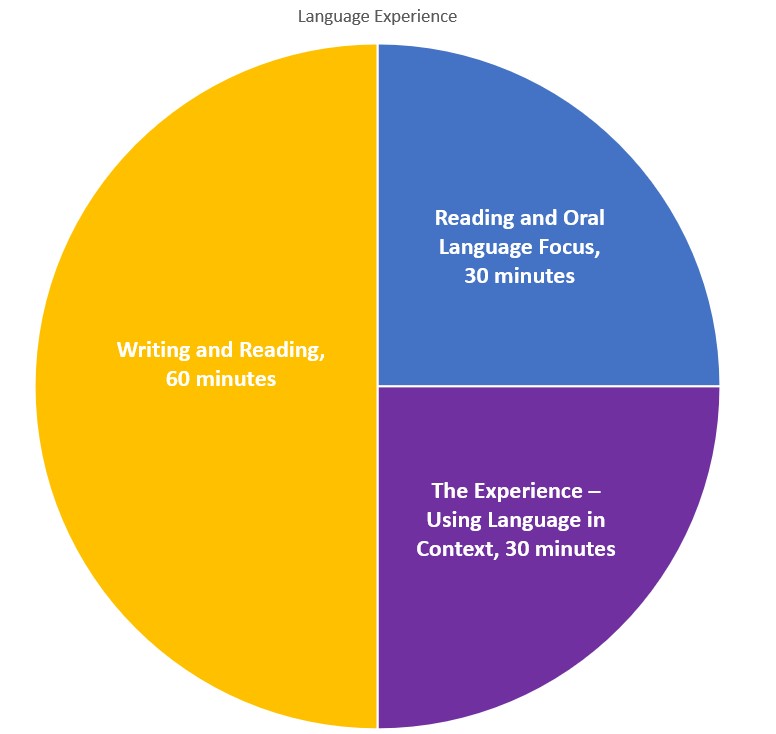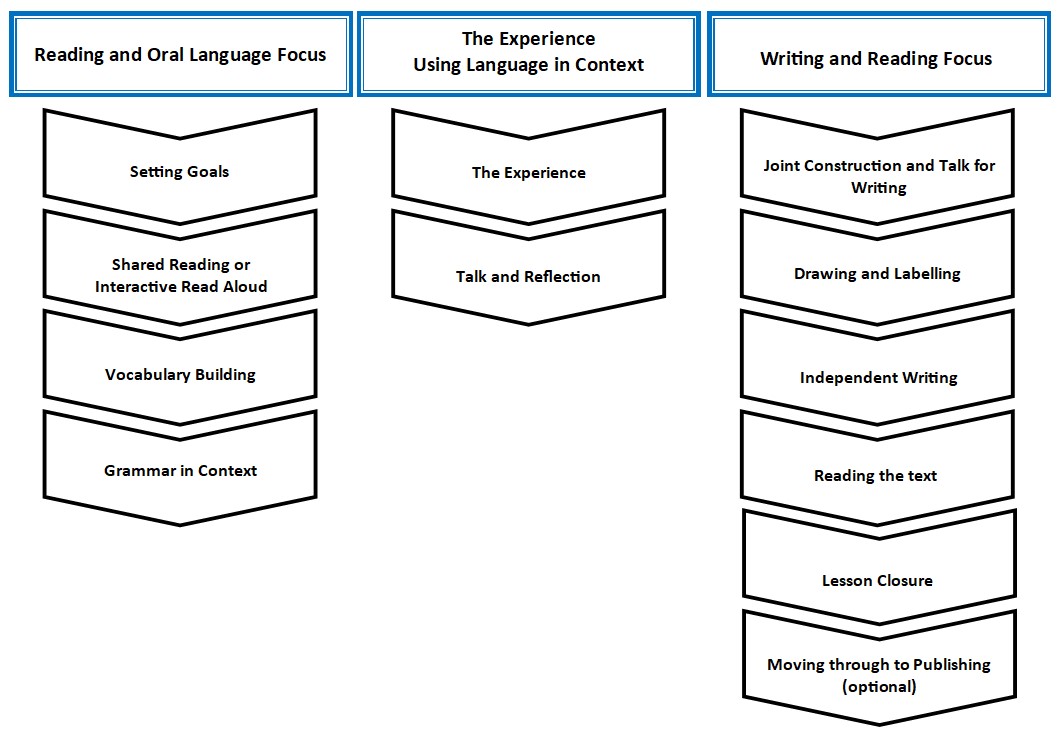Overview
The Language Experience approach aims to build students’ language through scaffolded talk and to work from a language to assist students to write and to read.

Language Experience can be used to assist students to extend their
vocabulary and language use, and to
use talks for writing. Teachers may wish to use a shared experience that relates to a topic of inquiry or investigation, a text focus, or students' interests.
F-2 examples which demonstrate the Language Experience approach and ideas for lessons can be found at these links:

Language experience approach in detail
Each of the phases for the Example Language Experience is explained below, expand each accordion to view details of the teacher and student roles of each phase of the Workshop.
The full Language Experience approach table can be viewed here.
Reading and oral language focus (approximately 30 minutes)
Setting goals
The teacher:
Shared reading or interactive read aloud
Teacher-led:
Students:
- share prior knowledge related to the experience.
- ask questions and share their wonderings.
- actively listen to the text.
- view and discuss the visual elements (photographs; diagrams; illustration).
Vocabulary building
Teacher-led:
- vocabulary instruction, related to the experience, particularly Tier 1 and 2 words, with some Tier 3 words.
- discussion of word meanings in context, using student-friendly definitions.
- modelling of hearing and saying sounds in new words.
Students:
- practice reading and pronouncing new words.
Grammar in context
The teacher:
Students:
- practice adding adjectives to expand vocabulary.
The experience - Using language in context(approximately 30 minutes)
The experience
The teacher:
- questions students to assist them to make observations during the experience.
- establishes expectations for students to use new vocabulary as they observe and discuss the experience.
Students:
- comment on the experience
- use new vocabulary.
Talk and reflection
The teacher:
- extended and dialogic talk about the experience.
Students:
- practice extending their responses
- practice building on each other’s responses.
- practice accountable talk.
Writing and reading focus (approximately 60 minutes)
Joint construction and talk for writing
The teacher:
- facilitates
joint construction of a text.
- introduce and invite students to talk for Writing
- models rehearsing writing by saying the sentence out loud and thinking out loud their processes for writing
- demonstrates how to incorporate new vocabulary.
- demonstrates how to add new words (for example, adjectives).
- demonstrates the use of appropriate punctuation to convey meaning.
- invites students to add to the text.
- encourages re-reading of the text for revision and editing purposes
Students:
- rehearse their contribution to the jointly constructed text by ‘saying it and stretching it’ first.
- use the classroom resources (for example, word walls and anchor charts) to assist with spelling new and familiar vocabulary.
- practice saying the sounds in the words they want to write.
- give constructive feedback to their peers
Drawing and labelling
The teacher:
- models how to draw and label something from the experience.
Student writing:
- students create their labelled diagram.
Independent writing
The teacher:
Students:
- create a short written text to accompany their labelled drawing.
- access classroom resources to use new and familiar vocabulary.
Reading the text
Student reading:
- students read their text to a partner or small group.
- focus on fluency.
- focus on pronunciation.
Lesson closure
The teacher:
- asks students to reflect on how they used to talk to help them write.
- asks students to report back on their learning with relation to the learning intention and differentiated success criteria using extended and dialogic talk.
Moving through to publishing (optional 60 minutes)
The teacher:
- supports students to produce a final version of their text for publication in either a print-based or digital format.
The student chooses to:
- re-work their diagram and add further illustrations,
- extend their written text, or retain the original text.